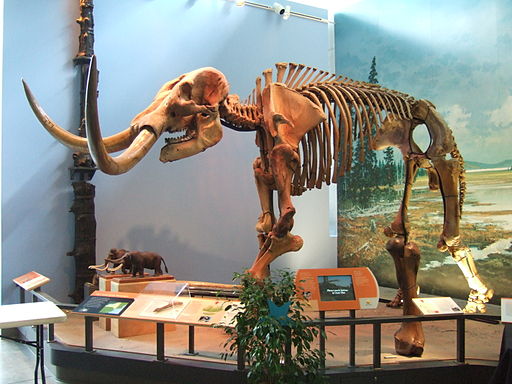The Ancient Elephant
Mastodons were huge mammals that lived from about 3 million to 10,000 years ago during the Ice Age.

| Meaning | Breast tooth [Mast-odon] |
| Pronunciation | MAS-to-don |
| When: | Miocene to Pleistocene (about 11 million–12,000 years ago) |
| Where: | North America North and Central America |
| What: | Mammal (extinct relative of modern elephants) |
| Weight: | Estimated around 5 metric tons |
| Length: | Approximately 3 meters (10 feet) at the shoulder |
| Diet: | Herbivorous (ate leaves, twigs, and branches) |
| Discovered: | Known to humans since prehistoric times; scientific classification by Johann Friedrich Blumenbach in 1799 |
They looked like modern elephants but had shorter legs and thicker bodies.
Mastodons stood up to 10 feet tall and had long, curved tusks.
They lived in forests and grasslands, eating leaves, twigs, and fruits.
Mastodons traveled in herds and used their tusks to dig for food.
They disappeared around 10,000 years ago, likely due to climate changes and hunting by early humans.
